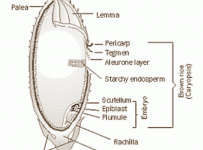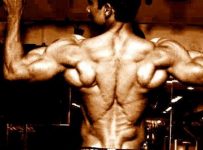
By Mason Woodruff STACK.com
It’s hard to argue with the notion that Barbell Squats and Deadlifts are the kings of exercise. They are amazing tools for building muscle and strength not only in the legs, but in the entire body. If you compared any exercise on the list below head-to-head with the Barbell Squat or Deadlift, it would lose. So why are we even talking about a leg workout without Squats?
The Squat and Deadlift are superior exercises, but they are also extremely technical, difficult to learn and intimidating for most lifters and athletes. If you lack access to good coaching or resources for properly learning the Barbell Squat, it might be better to skip it for now. The same goes if you’re a relatively new lifter in the gym. There’s nothing wrong with hesitating to jump in with the big boys and load up a bar in your local squat rack. Building a solid base of strength with exercises like the ones below could be a great first step to eventually dominating the Squat.
Another benefit of hypertrophy and accessory exercises, especially early in a lifting career, is the positive effect on mind-muscle connection. Learning to contract and relax a specific muscle during certain movement patterns is a skill that should be developed by all athletes. The problem with diving right into Squats is the risk of failing to develop the neural connection to the needed muscles. Just like it’s possible to do a Pull-Up without using your lats, it’s possible to squat without using your glutes—but it’s a recipe for disaster.
Each exercise below is followed by several coaching cues to keep in mind for technique and form. Most of the exercises work best as hypertrophy-focused accessory work—meaning they are effective for building muscle and should not forever replace lifts like the Barbell Squat and Deadlift. For this reason, optimal set and rep schemes for these exercises are between 2-4 sets of 8-12 reps.
Option 1
The Bulgarian Split Squat is a great substitute for the Squat. You only need a bench or box, and you can use dumbbells, kettlebells or a barbell. The exercise builds single-leg strength, with a focus on the quads. Follow this with the Stiff-Leg Deadlift to work the muscles on the back side of your body.
Bulgarian Split Squat
- Elevate your rear foot to comfortable height.
- Learn forward slightly.
- Front foot position influences activated muscles: a vertical shin engages the glutes better than allowing your knee to travel over your toe, which hits more of the quadriceps.
- Add weight only after you master the bodyweight variation.
Barbell Stiff Leg Deadlift
- Knees slightly bent, nearly locked at the top part of the movement.
- Maintain flat lumbar spine (low back) with minimal upper-back rounding at the far end of your range of motion. Loads should be lighter than a traditional Deadlift.
- Bar path travels away from your legs and over your toes, unlike the Romanian Deadlift, in which it travels close to your body.
Option 2
The Trap Bar Deadlift combines the benefits of the Squat and Deadlift in one exercise. You can perform the Sumo Squat variation with dumbbells or kettlebells. Use it to still get a Squat in your workout and target your muscles in a different way.
Trap Bar Deadlift
- Chest up. If you have a logo on your shirt, you should be able to see it.
- Shoulder blades back and down—this creates a very upright posture.
- Push your hips back before bending at the knees.
- Grip should be in line with your shins or your center of gravity.
- Shins nearly vertical.
Sumo Squat
- Wider stance with toes pointed slightly outward.
- Push your knees out to remain in line with your toes, or point them in the same direction.
- Shoulders should always be above the level of your hips.
- Push hips back and down; bend at the hip before the knee.
- Range of motion can be increased by elevating feet on steps or other platform.
Option 3
Put simply: the Barbell Glute Bridge is one of the best glute development exercises. Combine it with the Walking Lunge for a killer lower-body workout.
Barbell Glute Bridge
- Barbell should rest in your hip crease (between pelvic and pubic bones). If you have never done this exercise, use padding to ease the discomfort.
- Push through your heels and contract your glutes (squeeze your butt) as hard as possible to move the barbell off the floor. To ensure you’re pushing through the heels, lift your toes off the floor.
- It’s important to lock your hips out fully on each rep; pausing for a second at the top is a solid reminder.
- Maintain a neutral spine and neck whether you use a bench, BOSU ball or the floor.
Walking Lunge
- Upright torso.
- Braced, tight core (flexed abs and butt).
- Vertical shins; knees behind the toes of the front foot.
- Slow your pace; focus on contracting the targeted muscle groups.
Study the technique of the Barbell Squat while using these exercises to build a solid base of strength and muscle. By the time you’re ready to start squatting in its full capacity, you will be two steps ahead of your competition.
Source: http://www.stack.com/a/how-to-get-a-complete-leg-workout-without-squats?







